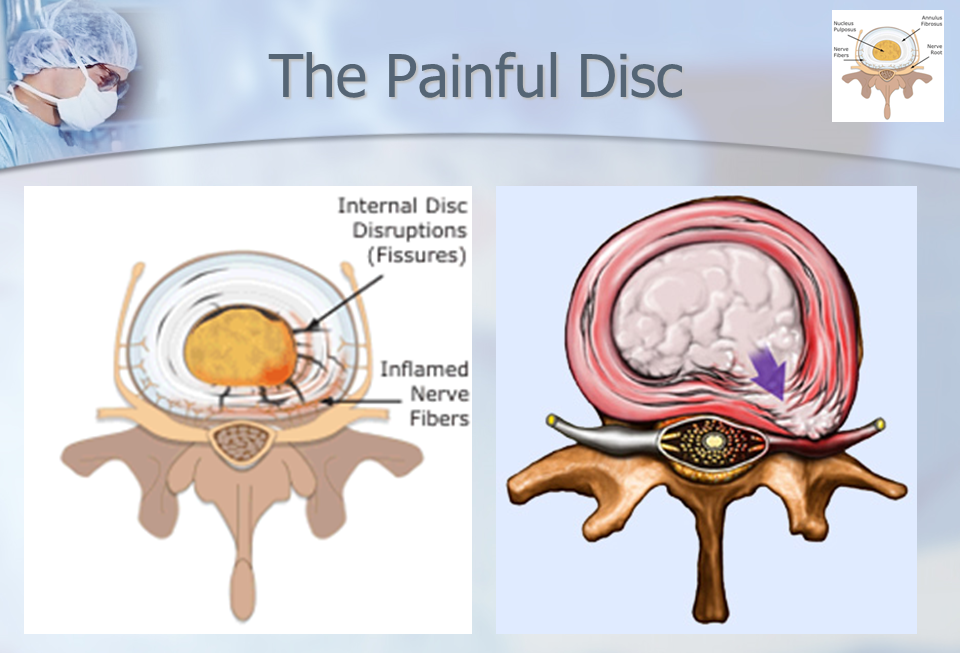- Due to multiple factors, the pulpy center loses water and becomes bridle
- The disc becomes inflamed and starts producing inflammatory substances
- These substances start eroding the inner aspect of the annulus generating “cracks” called fissures
- As long as the fissures don’t reach the area on the back of the disc where the pain sensitive fibers are, the process is painless and most people don’t even know it already started
- The pulp in the center of the disc can now push through these cracks in the annulus. When the pulp reaches the outer annulus it irritates the pain sensitive fibers and it causes back pain
- When the pulp accumulates, the annulus begin to bulge out and makes contact with the nerve root and hence causes leg pain. This is the so called herniated disc
- If the accumulation of pulp continues, the internal pressure of the disc increases until the annular fibers tear completely and disc material pours out onto the nerve root and surrounding tissues. This phenomenon usually causes sudden increase in leg pain due the mechanical compression of the nerve root. This is the so called extruded herniated disc
- The nuclear material and it’s chemicals irritate the nerve root which becomes very inflamed and the leg pain becomes almost constant
- If the offending disc material is not removed, the surrounding tissue react and in time, scar will form. The process then becomes chronic in nature






